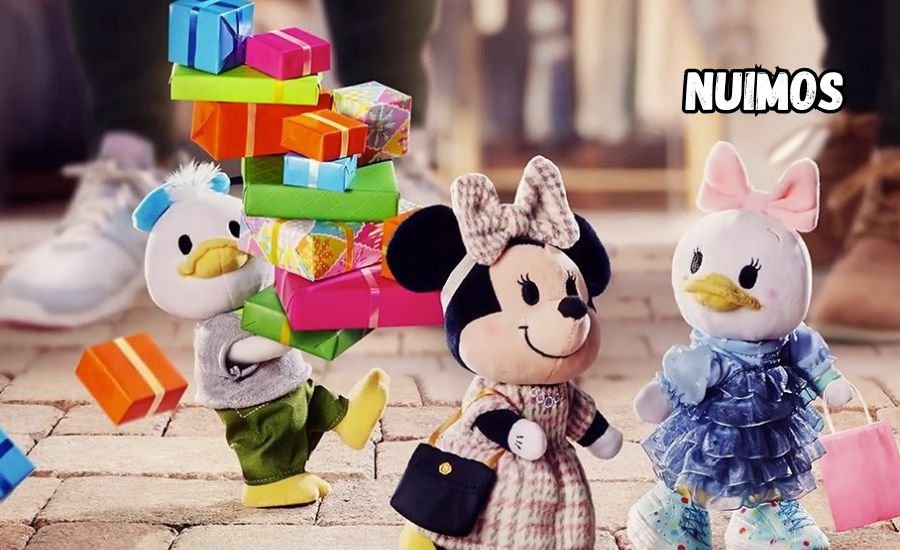Art Class Games: Creative Ways to Bring Fun and Learning Together
Art class is a place where students can express themselves, tap into their creativity, and experiment with different materials. But even the most creative minds can sometimes use a little spark to get their ideas flowing. That’s where art class games come in! These games are not only fun, but they also help students improve their skills, think outside the box, and learn in a way that feels less like schoolwork and more like play.
In this article, we’ll dive into a variety of art class games you can use to make your lessons more engaging, educational, and enjoyable for students of all ages. Whether you’re teaching young children or older teens, there’s something for every classroom that will help students unleash their inner artist. Let’s explore these fun and interactive games!
Art Charades: Drawing and Guessing with a Twist
Charades is a classic game where players act out words or phrases for their team to guess. But in art class, we put a creative twist on it—students will be drawing, not acting! This game helps develop quick-thinking skills, boosts creativity, and makes drawing practice fun and collaborative.
How to Play:
- Divide the class into two teams.
- A student from one team picks an art-related word or phrase (e.g., “tree,” “castle,” or “portrait”) and starts drawing it on the board or large paper.
- The other team has to guess what the drawing is before the time runs out. Set a timer for added excitement!
- Teams switch turns, and the one with the most correct guesses wins.
Why It’s Great:
- Students learn to express ideas visually.
- It fosters teamwork and cooperation.
- It helps students think quickly under pressure, which boosts their problem-solving skills.
Pictionary: Guess the Drawing

Pictionary is a game that gets everyone involved in drawing and guessing. It’s great for reinforcing vocabulary and concepts related to art, such as color theory, shapes, and famous artists. By adding categories like “art history,” “tools of the trade,” or “famous paintings,” you can make the game both fun and educational.
How to Play:
- Split the class into two teams.
- One student from each team picks an art-related word from the category and begins drawing it.
- The other team has to guess the word before the timer runs out.
- After a few rounds, switch categories to keep things interesting.
Why It’s Great:
- It helps students practice quick thinking and visual expression.
- It reinforces important art terms and concepts.
- It’s fun and competitive, keeping students engaged.
Guess the Artist: An Art History Challenge
This game introduces students to famous artists and their masterpieces in a fun, interactive way. It encourages critical thinking and helps students recognize different artistic styles and techniques. By playing this game, students can learn more about the world of art without it feeling like a lecture.
How to Play:
- Show students a famous piece of art without revealing the artist’s name.
- Give them clues about the artist or their style.
- Students guess which artist created the artwork. You can provide hints, such as the artist’s nationality, art movement, or signature techniques.
- The student who guesses correctly gets a point.
Why It’s Great:
- It helps students become familiar with famous artists and art movements.
- It encourages students to think critically about different art styles.
- It makes art history more engaging and interactive.
Color Hunt: Learning About Colors in a Fun Way
Color theory is a critical concept in art, and Color Hunt makes learning about colors interactive and fun. This game encourages students to explore the world around them and discover how colors are used in nature and everyday objects.
How to Play:
- Give each student a color palette or a set of colored cards (e.g., red, blue, green).
- Have students search the classroom or outdoor space to find objects that match the colors on their palette.
- Once they’ve collected their objects, students can use them to create a color-themed artwork.
Why It’s Great:
- Students practice identifying colors and learn how they work together.
- It gets students moving and exploring their surroundings.
- It can be used to teach complementary, primary, and secondary colors.
Art Scavenger Hunt: A Creative Exploration Game
Art scavenger hunts combine problem-solving with artistic exploration. In this game, students go on a hunt to find objects or materials that match specific art-related criteria. This game helps sharpen their observation skills while allowing them to think creatively.
How to Play:
- Create a list of items or themes related to art (e.g., “a circle,” “something green,” “a material that feels rough”).
- Students can either find physical objects or take photographs of them.
- The student or team who finds the most items on the list in the given time wins.
Why It’s Great:
- It encourages creative thinking and exploration.
- It’s a great way to learn about different textures, colors, and shapes.
- It works well both indoors and outdoors.
Collaborative Art Project: Working Together as a Team
This game is perfect for fostering collaboration and teamwork among students. In a collaborative art project, each student contributes a small part of a larger artwork, which helps them learn how to work with others and create something unique together.
How to Play:
- Divide the class into small groups, and assign each group a section of a large artwork (e.g., a mural or collage).
- Each student in the group adds their personal touch to their assigned section.
- After everyone finishes, the sections are combined to create one large masterpiece.
Why It’s Great:
- It teaches teamwork and how to integrate various artistic styles into a cohesive work.
- It helps students learn how to communicate their ideas visually.
- It can result in beautiful, large-scale pieces of art that can be displayed in the classroom.
Art Bingo: A Fun Way to Review Art Concepts
Art Bingo is a great way to review and reinforce key art terms, techniques, or famous artists. This game is simple to set up and can be used at any time during your art lesson, whether for a warm-up, as a break, or at the end of a unit.
How to Play:
- Create Bingo cards with art-related terms or images (e.g., “portrait,” “brushstroke,” “abstract,” “impressionism”).
- Call out the terms or show the images, and students mark them off on their cards.
- The first student to complete a line or full card wins a small prize or recognition.
Why It’s Great:
- It reinforces art vocabulary in a fun and low-pressure way.
- It’s easy to play and can be adapted for any art topic.
- Students can play multiple rounds to practice different terms.
Read Next: Finbusines.
Drawing Telephone: A Game of Miscommunication
Drawing Telephone is a fun and funny game that involves drawing and passing it on. It’s an excellent way to show how communication can be distorted as it passes through different people, all while improving drawing and problem-solving skills.
How to Play:
- Each student draws something simple, like “a tree,” on a piece of paper.
- They then pass the paper to the next student, who looks at the drawing, guesses what it is, and draws their interpretation of it.
- This continues until the paper makes its way back to the original artist, who compares the final drawing with their original idea.
Why It’s Great:
- It teaches how ideas can change when communicated visually.
- It’s fun and encourages laughter, making it a lighthearted activity.
- It helps students learn to communicate through drawings.
Themed Art Projects: A Creative Challenge
Themed art projects are a fantastic way to challenge students to think creatively within specific parameters. By giving students a theme, you can encourage them to come up with unique and imaginative ways to interpret it.
How to Play:
- Announce a theme (e.g., “underwater,” “futuristic,” “space,” or “nature”).
- Give students a set time limit to create their artwork based on the theme.
- After they finish, students can present their artwork to the class and explain how they interpreted the theme.
Why It’s Great:
- It encourages creativity and problem-solving.
- Students learn how to interpret and express abstract concepts.
- It allows students to explore different materials and techniques.
Art Trivia: Test Your Art Knowledge

Art Trivia is a fun and educational game that helps students learn more about art history, famous artists, and various art movements. It’s a great way to introduce new topics and test students’ knowledge in a competitive but enjoyable way.
How to Play:
- Create a list of art-related trivia questions (e.g., “Who painted the Mona Lisa?” or “What is the style of art that focuses on light and color?”).
- Ask students the questions, and award points for correct answers.
- You can divide the class into teams or play individually.
Why It’s Great:
- It’s a fun way to learn about art history.
- It encourages critical thinking and recall.
- It can be played as a team or individual competition, adding excitement to the lesson.
Conclusion: Why Art Class Games Are Important
Art class games are a fantastic way to make learning more interactive, engaging, and enjoyable. These games encourage creativity, teamwork, and art appreciation, all while making lessons more fun and memorable. By using games like Art Charades, Pictionary, and Color Hunt, you can transform your art class into an exciting and inspiring environment where students are eager to express themselves and learn.
So, whether you’re introducing a new concept, reviewing a lesson, or just looking to add some fun to your class, try incorporating some of these art class games. Not only will your students enjoy themselves, but they’ll also develop important artistic skills that will stay with them for a lifetime.
FAQs
Q: What are art class games?
A: Art class games are fun and interactive activities designed to help students develop their creativity, artistic skills, and teamwork while learning about art concepts and history.
Q: How do art class games help students improve their skills?
A: These games enhance students’ drawing, observation, problem-solving, and critical thinking abilities, allowing them to practice art techniques in a fun, low-pressure environment.
Q: Can art class games be used for all age groups?
A: Yes, art class games can be adapted for students of all ages, from young children to teens, with varying complexity based on their age and skill level.
Q: Do art class games require a lot of preparation?
A: Most art class games require minimal preparation, such as gathering materials like paper, markers, or a whiteboard, making them easy to set up and play.
Q: Are art class games suitable for virtual or online art classes?
A: Yes, many art class games, like Pictionary or Art Trivia, can be easily adapted for virtual art classes using online tools and video conferencing platforms.
Q: How can art class games promote teamwork?
A: Games like collaborative art projects and team-based competitions encourage students to work together, share ideas, and create something as a group, fostering communication and cooperation.
Q: What are the benefits of playing art games in the classroom?
A: Art games make learning more engaging, reduce stress, encourage creativity, and help students retain artistic concepts better than traditional teaching methods.
Read More Latest Blogs on: Ntr-Games






